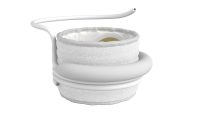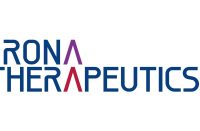PR News WireThis post was originally published on this site
EMPOWER CAD, a global prospective, multi-center, real-world study, reaffirms favorable acute outcomes for coronary IVL in female patients, unlike other calcium modification tools
PARIS, May 20, 2025 /PRNewswire/ — Shockwave Medical, Inc., part of Johnson & Johnson MedTech and a global leader in the field of circulatory restoration, announced today the 30-day primary endpoint results of EMPOWER CAD, the first prospective, real-world percutaneous coronary intervention (PCI) study in female patients with complex, calcified coronary artery disease. The favorable results confirm the results of earlier retrospective analyses demonstrating the benefits of coronary intravascular lithotripsy (IVL) in female patients. The results were presented in a late-breaking presentation at the annual EuroPCR meeting in Paris.
Women with coronary artery calcification (CAC) undergoing PCI are often underrepresented in clinical trials and have historically poorer outcomes than men, including increased risk of adverse clinical outcomes and high rates of procedural complications with other calcium modification treatments, such as rotational or orbital atherectomy.1,2
Investigators designed the EMPOWER CAD study to evaluate real-world outcomes in female patients with severely calcified coronary lesions treated with an IVL-first treatment strategy and confirm positive results from previous studies showing similar safety and effectiveness outcomes across both men and women. EMPOWER CAD is a pivotal study comprised of a series of firsts: Shockwave’s first prospective, post-market study of IVL examining an all-comers female population with minimal exclusion criteria, the first study to encourage a Shockwave IVL-first PCI strategy for calcified coronary lesions, and the first study to follow-up with enrolled patients for three years following IVL therapy.
The study enrolled 399 participants across 45 sites spanning five countries in the European Union and United States. The study is led by co-principal investigators Margaret McEntegart, M.D., Ph.D., Director of the Complex PCI and CTO programs and Cardiac Catheterization Labs at Columbia University Medical Center/NewYork-Presbyterian Hospital and Alexandra Lansky, M.D., Professor of Medicine in the section of Cardiovascular Medicine and Director, Heart and Vascular Clinical Research Program, Yale University School of Medicine. The study’s European lead is Nieves Gonzalo, M.D., Ph.D., consultant interventional cardiologist at Hospital Clinico San Carlos in Madrid, Spain.†
“Women are typically underdiagnosed, underrepresented and have underwhelming outcomes in coronary artery disease studies,” said Dr. Lansky. “Our goal with the EMPOWER CAD study was to address this gap and determine whether Shockwave IVL should be considered as the front-line calcium modification approach in female patients with complex coronary artery disease. The results demonstrate the benefits of IVL use in this specific patient population and validate findings from previous studies.”
The primary effectiveness endpoint of procedural success, defined as stent delivery with ≤30% residual stenosis for all treated target lesions without in-hospital target lesion failure (TLF), was 86.9% at 30 days. The primary safety endpoint, defined as TLF as a composite of cardiac death, myocardial infarction attributable to target vessel (TV-MI) or ischemia-driven target lesion revascularization (ID-TLR) within 30 days, was 12.1%. TLF was primary driven by the rate of periprocedural MI3 (10.6%); the majority of these periprocedural MIs were not associated with any clinical signs or symptoms. Cardiac death and ID-TLR rates were each 1.3%. Procedural complications were rare with only one patient (0.2%) having a serious angiographic complication when assessed at the end of the procedure. There were also clinically and statistically significant improvements in health-related quality of life scores at 30 days compared to baselines.
“By leveraging a Shockwave IVL-first approach, the EMPOWER CAD 30-day results demonstrated high procedural success, low complication rates and significant improvements in quality of life among real-world female patients,” said Dr. McEntegart. “While we look forward to following these patients for the next three years, these primary endpoint results confirm that excellent outcomes can be achieved with the use of Shockwave IVL in women with complex, calcified coronary artery disease.”
Nick West., M.D., Chief Medical Officer, Shockwave Medical, emphasized the significance of the EMPOWER CAD study, stating, “Today marks a critical milestone in the journey to improve outcomes for female patients with calcified lesions. What began as an idea a few years ago is now a commendable reality today, thanks to study leadership and site investigators accelerating completion and reporting these important results. We’re looking forward to learning more about the benefits of IVL therapy in this underrepresented patient population, both acutely and at extended follow-up.”
About Shockwave Medical
Shockwave Medical, Inc., part of Johnson & Johnson MedTech, is a leader in the development and commercialization of innovative products that are transforming the treatment of cardiovascular disease. Its first-of-its-kind Intravascular Lithotripsy (IVL) technology has transformed the treatment of atherosclerotic cardiovascular disease by safely using sonic pressure waves to disrupt challenging calcified plaque, resulting in significantly improved patient outcomes. Its Reducer technology, which is under clinical investigation in the United States and is CE Marked in the European Union and the United Kingdom, is designed to provide relief to the millions of patients worldwide suffering from refractory angina by redistributing blood flow within the heart. Learn more at www.shockwavemedical.com.
Cardiovascular Solutions from Johnson & Johnson MedTech
Across Johnson & Johnson, we are tackling the world’s most complex and pervasive health challenges. Through a cardiovascular portfolio that provides healthcare professionals with advanced mapping and navigation, miniaturized tech, and precise ablation, we are addressing conditions with significant unmet needs such as heart failure, coronary artery disease, stroke, and atrial fibrillation. We are the global leaders in heart recovery, circulatory restoration and the treatment of heart rhythm disorders, as well as an emerging leader in neurovascular care, committed to taking on two of the leading causes of death worldwide in heart failure and stroke.
About Johnson & Johnson
At Johnson & Johnson, we believe health is everything. Our strength in healthcare innovation empowers us to build a world where complex diseases are prevented, treated, and cured, where treatments are smarter and less invasive, and solutions are personal. Through our expertise in Innovative Medicine and MedTech, we are uniquely positioned to innovate across the full spectrum of healthcare solutions today to deliver the breakthroughs of tomorrow and profoundly impact health for humanity. Learn more about our MedTech sector’s global scale and deep expertise in cardiovascular, orthopaedics, surgery and vision solutions at https://thenext.jnjmedtech.com. Follow us at @JNJMedTech and on LinkedIn. Shockwave Medical, Inc. is part of Johnson & Johnson MedTech.
Cautions Concerning Forward-Looking Statements
This press release contains “forward-looking statements” as defined in the Private Securities Litigation Reform Act of 1995. The reader is cautioned not to rely on these forward-looking statements. These statements are based on current expectations of future events. If underlying assumptions prove inaccurate or known or unknown risks or uncertainties materialize, actual results could vary materially from the expectations and projections of Shockwave Medical, Inc. and/or Johnson & Johnson. Risks and uncertainties include, but are not limited to: uncertainty of commercial success; challenges to patents; competition, including technological advances, new products and patents attained by competitors; manufacturing difficulties and delays; product efficacy or safety concerns resulting in product recalls or regulatory action; changes to applicable laws and regulations, including global health care reforms; changes in behavior and spending patterns of purchasers of health care products and services; and trends toward healthcare cost containment. A further list and descriptions of these risks, uncertainties and other factors can be found in Johnson & Johnson’s most recent Annual Report on Form 10-K, including in the sections captioned “Cautionary Note Regarding Forward-Looking Statements” and “Item 1A. Risk Factors,” and in Johnson & Johnson’s subsequent Quarterly Reports on Form 10-Q and other filings with the Securities and Exchange Commission. Copies of these filings are available online at www.sec.gov, www.jnj.com or on request from Johnson & Johnson. Neither Shockwave Medical, Inc. nor Johnson & Johnson undertakes to update any forward-looking statement as a result of new information or future events or developments.as a result of new information or future events or developments.
† Drs. McEntegart, Lansky and Gonzalo are paid consultants of Shockwave Medical. They have not been compensated in connection with this press release.
1 Giustino et al., JACC Cardiovasc Int 2016; Ford et al., Catheter Cardiovasc Interv 2020; Hussain et al., JSCAI 2022.
2 Kim et al. Catheter Cardiovasc Interv. 2016
3 As defined by SCAI for periprocedural MI and Fourth Universal (Type 4a) for spontaneous MI beyond discharge.
Media Contacts:
Lindsey Diaz-MacInnis
[email protected]
Rachael Jarnagin
[email protected]
Investor Contact:
Sandra Easton
[email protected]
SOURCE Johnson & Johnson MedTech







